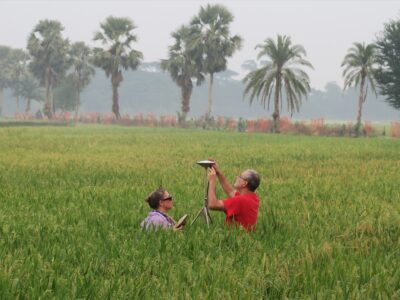By Gwenn Hennon and Matthew Harke

For the past few days, we have been loading the gear and setting up our lab on the R/V Kilo Moana. We have to secure everything down to the benches to prevent equipment from falling and being damaged in rough seas.
Yesterday, we set sail at 8am, rounded the Island of O’ahu, and headed north into the blue waters of the North Pacific Subtropical Gyre. We are currently in transit, but this gives us time to test equipment and make sure everything is in order by the time we reach our first station. It also gives us time to help with the many shipboard operations. After a hearty breakfast of eggs, bacon, tater tots, and coffee, we had the opportunity to help deploy a “towfish” from a boom extending out 15 meters off the starboard side of the boat. Since this was the first deployment of its kind on this vessel, there were a lot of hands to help. Matt is the guy in the blue hard hat.
A towfish is a device which looks like a torpedo. The towfish is tethered to the boat and lowered into the water with the boom. It then “swims” through the water while the ship is under way, allowing us to take continuous samples. The team is trying to collect trace metal samples, and so they attached a trace metal-clean hose to the towfish to pump water as far from the ship as possible.




